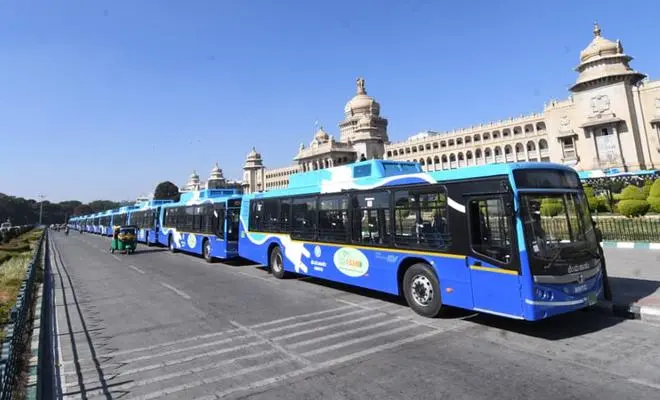Despite the buzz, electric vehicle adoption in the country seems slow and the transition from fossil fuel looks hazy. True, several car launches in 2024 are expected to be electric. But the mass adoption of EVs will come much later than sooner. A recent KPMG report, “Getting real about the EV transition,” observes rather succinctly, “It’s still an exciting and rewarding journey, but it may take longer, and the ride won’t be smooth.”
Several factors are contributing to this cautious approach on the part of manufacturers and consumers. These are: higher entry costs, range anxiety in the case of four wheelers and issues around charging infrastructure. Also, one point that needs to be factored in is that government subsidy offered under the Faster Adoption of (Hybrid &) Electrical Vehicles (FAME) scheme is available till March 31, 2024. Will the government consider extending the scheme and allocate more funds is being closely watched by the various players in the sector.
Notes Rohan Rao, Partner, Automotive and Lead, Electric Mobility, KPMG in India: “EV adoption across vehicle segments is expected to take off differently. EV 3W and 2W are already in the consideration set while purchasing new vehicles due to availability of comparable performance with ICE (internal combustion engines) and strong government subsidies. However, the turning point for EV transition in 4W private segment is expected post 2025, given unavailability of affordable models and under-developed charging infra along highways.”

Will the government consider extending the FAME scheme and allocate more funds is being closely watched by the various players in the sector. | Photo Credit: HANDOUT E MAIL
In 2Ws, most scooter OEMs have already launched at least one EV model. The segment has already seen more than 100 start-ups with their models plying on the road. In the e-Bus category, all the major OEMs have already developed models and are now focusing on increasing the range for inter-city travels. As more OEMs participate, prices of EV models are expected to reduce supporting EV adoption in 4Ws.
Charging network
There is a strong government push for setting up public charging stations. There are plans to install about 2,200 charging points via EESL (Energy Efficiency Services Limited) within cities and additional 100 plus stations across 23 cities along national highways. Many OMCs have also entered the charging infra business and are utilising their existing fuel stations to install charging points. Significantly, multiple start-ups have emerged over the last 3-4 years focusing on charger manufacturing and managing charging points.
The key concern is for inter-city travels, where a dense and reliable charging infrastructure would become critical. This has been realised by both government and companies, which is visible from the upcoming and planned EV fast charging corridors along multiple national highways. Additionally, the government is making efforts to upgrade existing highways to integrate one EV charging station per 50-100 km.
One of the challenges with EV transition (especially in 4W private segment) is lack of affordable models. Currently, more than 50 per cent ICE cars sold are sub-₹10 lakh, while EVs start at ₹10 lakh. With development of domestic EV supply chain and reduction in cost of battery cells (a major component of an EV), the prices are expected to reduce in next 4-5 years. However, price of an EV would still be costlier than a comparative ICE model, explains Rao.
EV transition
The turning point for EV transition in 4W private segment is expected post 2025, with increased availability of affordable models and improving charging infra along highways. The adoption of EVs and setting-up of charging infrastructure faces a peculiar challenge. While vehicle owners fear range anxiety, charging point operators fear poor utilisation due to low adoption. Continued government support for setting up charging infrastructure therefore is expected to play a critical role in adoption of EVs particularly for 4Ws.
Vishal Kapoor, CEO, EESL & CESL, looks ahead: “The EV sector offers substantial growth opportunities. Forecasts indicate that EVs could constitute over 40 per cent of India’s automotive market by 2030. This trajectory relies on technological advancements, infrastructure development, multilateral and cross-sectoral collaborations among OEMs, IT companies, grid and energy utilities, and various state and central ministries. Adoption of mobility-as-a-service and long-term innovative financing measures like the payment security mechanism remain crucial.” The ideal scenario would be when EVs gather momentum without subsidies, driven by sustainability.





Comments
Comments have to be in English, and in full sentences. They cannot be abusive or personal. Please abide by our community guidelines for posting your comments.
We have migrated to a new commenting platform. If you are already a registered user of TheHindu Businessline and logged in, you may continue to engage with our articles. If you do not have an account please register and login to post comments. Users can access their older comments by logging into their accounts on Vuukle.